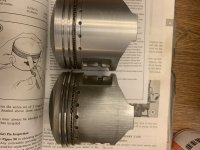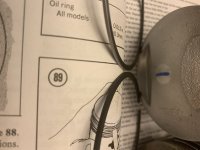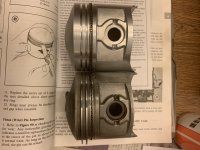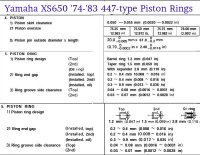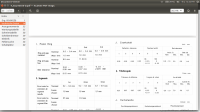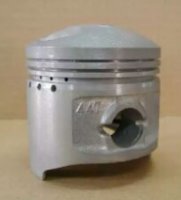Yup, basically just leaks thru the holes.
It falls under the catagory of "splash oiling".
Can't tell from your pics, but you'll want to ensure that there's also oiling holes in the oil control ring grooves, like this pic.
View attachment 145580
A manual snippet explaining those oiling holes.
View attachment 145581
The size of the holes isn't critical, just so they're there.
The side clearance callouts for the top 2 rings is part of the sealing science of piston rings, to resist high-pressure blowby of combustion pressures, but allow a tiny amount of that pressure to get behind the rings and press them against the cylinder wall. But, not so big as to allow ring "flutter", battering of the piston ringlands.
The side clearance callout for the oil control rings is just to ensure confining the oil to between the 2 rails, and to avoid the same flutter/battering.
The manual snippet of ring side clearances, showing zero for the oil control rings.
View attachment 145582
The springy expander spacer ring is supposed to gently press the 2 rails up/down to get that zero clearance.
Another snippet, describing the expander spacer.
View attachment 145583
So, those are the manual explanations, from 40-50 years ago.
If the oil control rails aren't being pressed up/down against the piston lands by the expander ring, I would expect a loss in oil control. Could get a little smoking, or not enuff to detect.
As far as I can tell, you're the first to notice this. Everybody else has had good results with these piston kits, maybe you will too. If not, please let us know...
